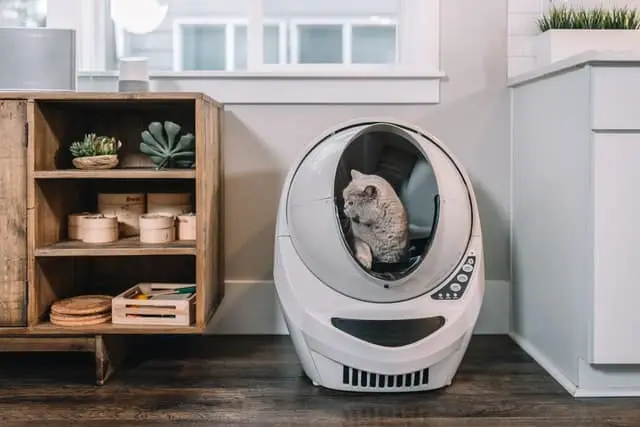
Observing the cat’s feces is an excellent tool to understand the state of health of the feline. Dry, bloody, dark or foul-smelling stools can be the wake-up call for a cat’s health problem.
If you have just got a cat, you may not have thought about it yet but, among the things you will have to do to take care of cat, there is also observe his poop. Scrutinizing and studying the cat’s feces is not a pastime but a way to check his health and to find out if there is something wrong with his body. In this article, we will look at how much cats should defecate, what their stools should be like, and which diseases indicate abnormal stools (liquid, dry, dark, greasy, yellow, or parasitic).
Cat feces: everything you need to know

Cats should defecate at least once a day; in puppies this number rises, other times the number depends on the age of the cat, on his diet and on the state of health. Let’s say a normal number of times goes from one to three.
The feces should be expelled without difficulty by the cat, they should also be solid and formed but not dry, chocolate brown in color and in the shape of a small trunk.
Abnormal stools can be liquid, foul-smelling, greasy, dry, yellow, bloody, and dark.
Liquid cat feces (diarrhea)
We talk about diarrhea in cats when the feces are liquid or semi -liquid and altered in quantity (the number of daily defecations has increased excessively) and quality (consistency, smell, presence of traces of mucus or blood). Diarrhea can be acute or chronic: in the first case it disappears within a few days by itself or with the aid of therapy; in the second it lasts longer than two / three weeks.
The most common and recurrent causes of acute diarrhea are:
- hemorrhagic gastroenteritis;
- food allergies or intolerances;
- food poisoning;
- ingestion of spoiled food;
- food problems (such as poor quality foods or sudden changes in diet);
- parasites (roundworms, coccidia, giardia, tapeworms, strongyles);
- infectious diseases (bacterial or viral);
- acute pancreatitis;
- liver and kidney pathologies;
- irritable bowel syndrome;
- intestinal invasion (sliding of a portion of the intestine into another adjacent portion);
- side effect of a drug.
The most common and recurrent causes of chronic diarrhea are:
- food intolerance;
- liver and kidney diseases;
- pancreatic insufficiency;
- malabsorption syndromes;
- forms of colitis (lymphoplasmacytic, eosinophilic, ulcerative, histiocytic);
- chronic intestinal parasites.
Smelly cat feces
All feces give off a bad smell, but if you have to open doors and windows to ventilate the room or you have to cover your nose and mouth then something is wrong. The causes of any foul-smelling stools are:
- sudden changes in diet especially in puppies;
- diet involving poor quality food;
- bacterial infections such as E. coli, salmonella and campylobacter;
- absorption disorders in the small intestine;
- parasites (trichomonas, coccidia and giardia).
Greasy stools (steatorrhea)
Feces that contain an abnormal amount of fat are known as steatorrhea and are the alarm bells of cat obesity, the presence of parasites (trichomonas, coccidia and giardia) and absorption disorders.
Dry cat feces
The feces are made up of about three quarters of water, so the hard or dry ones are characterized by a strong lack of liquids therefore they are difficult to expel and appear in the form of small balls. The causes are mainly a low-fiber diet and dehydration (the cat has lost fluids due to vomiting or excessive urination) or does not drink enough water.
Yellow stools
The liver produces bile salts to aid in the digestion of food; a reduction or absence of these salts (which give the classic brown color to the stool) leads to yellow colored stools.
Yellow stools are therefore the wake-up call for a protozoal infection, liver problems and gallbladder dysfunction.
Presence of blood in feline feces
If the blood is inside the feces, these are dark and tarry (melena), if instead the blood resides outside it is called hematochezia.
Melena is associated with bleeding from the upper gastrointestinal tract or from blood ingested from the mouth or nose. The causes can be:
- ingestion of blood from the mouth or nose;
- stomach ulcers;
- aspirin poisoning (causes irritation of the gastric mucosa);
- bleeding disorders (causes bleeding from the upper intestinal tract);
- foreign bodies (causing damage and bleeding of the upper intestinal tract)
- trauma;
- infections.
Hematochezia, on the other hand, results from bleeding from the lower gastrointestinal tract (colon or rectum) and the causes can be:
- impacted anal glands;
- ingestion of foreign bodies that have damaged the colon with transit;
- irritable bowel disorder;
- bleeding disorders such as thrombocytopenia;
- disseminated intravascular coagulation;
- ingestion of poisons such as that of mice;
- constipation;
- rectal or anal polyps;
- inflammation of the colon.
Dark cat feces
In addition to the presence of blood, there are at least two other causes that result in dark stools. These are activated carbon and iron supplements.
Presence of parasites in cat feces
The most common parasites you will see are tapeworms (rice-like bits in feces or around the cat’s anus) and roundworms (long, white, thin worms).
If you suspect that your cat’s feces are not normal, you will need to hear from your vet and perhaps bring him a sample. Obviously the therapy he will prescribe for Kitty will depend on the causes.






